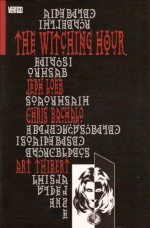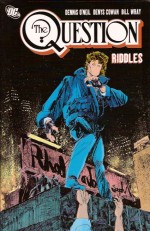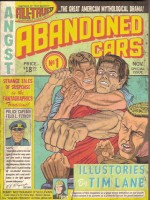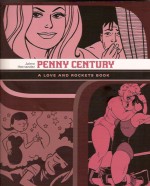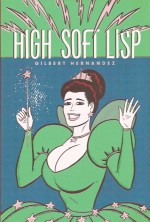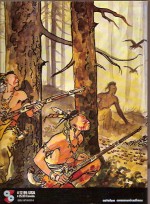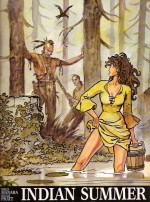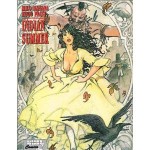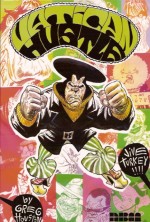
By Max Collins & Terry Beatty (Aardvark-Vanaheim)
ISBN: 0-919359-05-1
Despite being one of the most popular genres in literature and the fact that most fiction books are bought and read by women, Private Eye crime stories are desperately short of female protagonists. Marry that with the observation that “gum-shoe†comics are also as rare as hen’s teeth and it’s a wonder that a series such as Ms. Tree ever got off the drawing board.
The secret – as always – is quality.
The black widow of detective fiction first appeared in 1981 as a serial in the groundbreaking black-and-white anthology comic Eclipse Magazine, along with a number of other quirky alternatives to the East Coast superheroes that had a stranglehold on American comics in the 1970s and early 1980s. Besides such gems as Sax Rohmer’s ‘Dope’ (adapted by Trina Robbins), Steve Englehart and Marshal Rogers’ ‘I Am Coyote’, Don McGregor & Gene Colan’s ‘Ragamuffins’, B.C. Boyer’s wonderful ‘Masked Man’ and a host of other gems from the industry’s finest, Max Allan Collins, crime novelist and new writer of the venerable Dick Tracy newspaper strip, with young humour cartoonist Terry Beatty introduced a cold, calculating and genuinely fierce avenger who put new gloss on the hallowed imagery and plot of the hard-bitten, hard-boiled shamus avenging a murdered partner…
She was one of the first features to win a solo title, Ms. Tree’s Thrilling Detective Stories which became simply Ms. Tree with the fourth issue. Although the marketplace was not friendly to such a radical concept the series ran for 50 issues, and 2 specials, from three publishers (Eclipse, Aardvark-Vanaheim and Renegade Press) before finally dying in 1989. Gone but not quickly forgotten she was promptly revived as a DC comic in 1990 for another 10 giant-sized issues as Ms. Tree Quarterly/ Ms. Tree Special; three more blood-soaked, mayhem-packed, morally challenging years of pure magic.
Astonishingly, as far as I know there are no contemporary collections of her exploits – despite Collins’ status as a prolific and best-selling author of both graphic novels (Road to Perdition, CSI, and prose sequences featuring his crime-creations Nathan Heller, Quarry, Nolan, Mallory and a veritable pantheon of others).
In 2007 Collins released a classy prose novel, “Deadly Beloved†about his troubled troubleshooter, but thus far the Files of Ms. Tree volumes are the only place to find the collected exploits of this superb crime-stopper.
The first volume I, For an Eye and Death Do Us Part gathers the introductory tale from Eclipse Magazine #1-6 (May 1981-July 1982) and the first story-arc from Ms. Tree’s Thrilling Detective Stories #1-3 (August-December 1982), two chilling tales of regret and revenge, perfectly delivered as fair-play mystery tales. You might not be able to extract your own retribution, but if you’re smart enough you can solve the clues as fast as our heroine does…
In ‘I, For an Eye’ we briefly meet Mike Tree, a true icon of the detective profession: hard, tough, sharp and fair: an ex-cop who set up for himself and did well. At the peak of career he met Mike Friday, a feisty, clever, pistol-packing, two-fisted dame who quickly moved from secretary to full partner. They fell in love…
On their wedding night her husband was gunned down and the new Mrs. Tree set out to find his killer. Assuming control over their detective agency she used part of the staff to keep the business going but placed her husband’s… her… best people onto finding out why her man died. Together they uncovered a web of corruption and lies which included the fact that she was not the first Mrs. Tree. Mike had a previous wife and a son who’s painfully like his departed dad…
Gritty, witty and darkly relentless this tale of corruption and twisted friendship set the pace for all the ensuing adventures; a brilliant odyssey which peels like an onion, always showing that there’s still more to uncover…
Even after finding Mike’s killer and delivering the traditional vengeance in great style, the investigation revealed a higher mastermind behind it all, in the shape of mob boss Dominic Muerta, and the second tale ‘Death Do Us Part’ deals with the repercussions of Ms. Tree’s crusade against that psychotic grandee’s operations.
The unrelenting death and misery has taken its toll on the traumatised widow: she is in therapy but when that doesn’t work she takes a holiday to a distant honeymoon resort. She even finds a new lover. However when the newlyweds in the next cabin are murdered by a hit-man Tree realises that she is trapped on a path that can only lead to more death…
Adult, astute, and enchantingly challenging, this second drama is full of plot twists and clever set-pieces that will charm and enthrall crime fans of every persuasion and the art by Beatty is a sheer revelation. Static and informative, remorselessly matter-of-fact and deadly in its cold efficiency – a quality which might be off-putting to some but which so perfectly matches the persona of its pitiless star that I can’t imagine any other style working at all.
This volume, released in 1984, is stuffed with behind-the-scenes extras and commentary from both creators, including a colour cover gallery, and as an added bonus, an original illustrated prose short-story ‘Red Light’, a terse thriller that perfectly supplements the grim mood of the book.
Despite the tragic scenarios, ruthless characterisations and high body-count, this is a clever, funny affair steeped in the lore of detective fiction, stuffed with in-jokes for the cognoscenti (such as the unspoken conceit that the heroine Mike Friday is the daughter of legendary TV cop Joe “Dragnet†Friday) and dripping in the truly magical gratification factor that shows complete scum finally get what’s coming to them…
Ms. Tree is the closest thing the American market has ever produced to challenge our own Queen of Adventure Modesty Blaise: how they can let her languish in graphic obscurity is a greater crime than any described in this compelling classic collection. Hunt it down for your pleasure and pray somebody has the great good sense to bring back Ms. Tree.
© 1980, 1981, 1982, 1983, 1984 Max Collins and Terry Beatty. All Rights Reserved.
